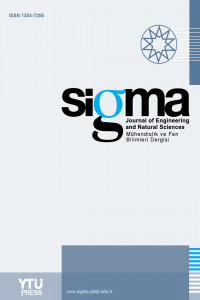Abstract
Shortening the processing time and increasing the efficiency have been a need in machining at all times. In addition to continuous developments in materials of cutting tools provided by the search every passing day, coating the surfaces of the existing cutting tools has been evaluated as more economical and more efficient solution.Studies deal with coating of cutting tools was started in the 1970s and coated tools were recognized as an important development in machining. Titanium carbide (TiC), titanium nitride (TiN), titanium carbonitride (TiCN), cubic boron nitride (CBN), chromium nitride (CrN) and aluminum oxide (Al2O3) are among the most widely used coating materials. Coating studies focused on especially high-speed steel and sintered carbide cutting tools as they have wide application area. In traditional coatings, are coated in the form of layers. As a result of occurring high temperatures during metal cutting, the different thermal expansions take place between the layers. Different expansions cause micro-cracks and this reduces the coating life. As a result of efforts to prevent the formation of these cracks, functional graded coatings (FGC) has been developed. In the study, high speed steel substrate material was coated as functionally graded with titanium carbonitride (TiCN) and titanium-boron carbonitride (TiBCN) coating materials. Coatings were made by magnetic sputtering method. Scanning electron microscope (SEM) images were taken and linear analyses, were realized for characterization of the coatings.
Keywords
High-speed steel titanium carbonitride titanium boron carbonitride magnetic sputtering functionally graded coating.
References
- The article references can be accessed from the .pdf file.
Details
| Primary Language | English |
|---|---|
| Subjects | Industrial Biotechnology |
| Journal Section | Research Articles |
| Authors | |
| Publication Date | September 1, 2013 |
| Submission Date | March 26, 2013 |
| Published in Issue | Year 2013 Volume: 31 Issue: 3 |
IMPORTANT NOTE: JOURNAL SUBMISSION LINK https://eds.yildiz.edu.tr/sigma/


